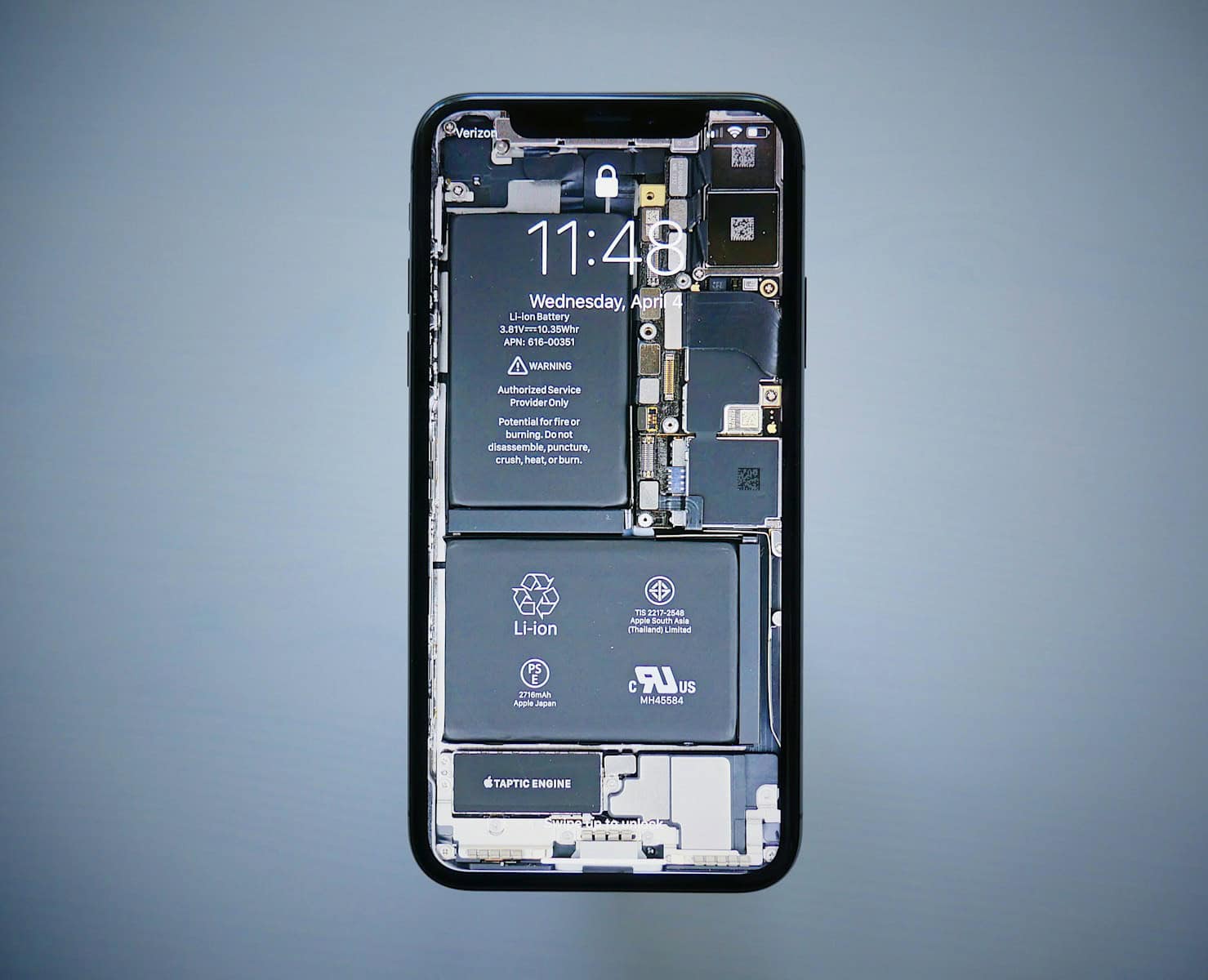Apple has quietly increased the cost of out-of-warranty battery replacements for newer iPhone models, and it’s already catching users off guard. The most notable hike hits the iPhone 16 Pro and Pro Max, with battery swaps now costing $119, up from the $99 charged for the iPhone 15 Pro. That 20% jump is part of a broader trend as Apple devices become more complex—and expensive—to maintain.
A Closer Look at the New Pricing
| iPhone Model | New Battery Replacement Cost | Previous Cost |
|---|---|---|
| iPhone 16 Pro / Pro Max | $119 | $99 |
| iPhone 16 / 16 Plus | $99 | — |
| iPhone 15 / 14 | $99 | — |
| iPhone 13 / 12 / 11 / X | $89 | ~$69–$79 |
| iPhone 8 / 7 / 6 / SE | $69 | ~$49–$69 |
These prices apply to users without AppleCare+, which continues to cover battery replacements free of charge if the battery drops below 80% of its original capacity.
Why Are Prices Going Up?
Several factors are driving the price hike:
- Newer iPhones are harder to service. The iPhone 16 Pro models now use a larger battery enclosed in a redesigned metal housing, which offers better heat dissipation but complicates disassembly.
- Component integration is tighter. As Apple packs more sensors and chips into thinner frames, replacing internal parts like batteries becomes more labor-intensive.
- Global inflation and labor costs. Like many tech companies, Apple is adjusting service pricing in response to rising global costs.
This is not the first time Apple has raised battery service prices. In 2023, the company added $20 across the board for many iPhone models. We’re likely to see similar adjustments moving forward, especially as batteries grow in capacity and require more precise handling.
Affordable Alternatives to Consider
Battery service through Apple may not always be your best option—especially if your phone is out of warranty and you’re not using AppleCare+. Here are other routes:
- 🛠️ Apple Self Service Repair
Apple’s official DIY program lets users order genuine parts and access repair manuals. Battery kits for models like the iPhone 12 and 13 still cost around $69, but you’ll need tools, patience, and comfort with tech repairs. - 🔧 Third-Party Repair Shops
Local and national repair providers often offer battery replacement at lower prices—sometimes as little as $40–$60. Just be cautious: using non-genuine parts may trigger system warnings or impact performance. - 🛡️ AppleCare+ Coverage
If you’re planning to keep your iPhone for several years, AppleCare+ may be worth the upfront investment. It includes battery coverage and protection against accidental damage for a monthly or one-time fee.
Should You Be Worried?
While these price hikes might sting, Apple has made efforts to extend battery life in newer iPhones. For instance, the iPhone 16 Pro Max reportedly lasts up to 30 hours of video playback, thanks to software enhancements and more efficient chips. That longevity may reduce how often users need replacements.
Still, this pricing trend signals a shift in how consumers need to think about long-term iPhone ownership. Keeping a device for 4–5 years might save money in the long run—but only if you factor in the increasing cost of maintenance.
Comparing AppleCare+ vs Out-Of-Pocket
Here’s a side-by-side breakdown comparing AppleCare+ vs. Out-of-Pocket Battery Replacement for iPhones in 2025, so you can decide which is more cost-effective depending on how long you plan to keep your phone:
AppleCare+ vs. Paying Per Repair
| Feature | AppleCare+ | Out-of-Pocket Repair |
|---|---|---|
| Cost (2 Years, iPhone 16 Pro) | ~$199 upfront or ~$9.99/month | $0 (until repair is needed) |
| Battery Replacement Cost | Free (if battery health < 80%) | $119 (iPhone 16 Pro / Pro Max) |
| Accidental Damage (e.g., screen crack) | $29–$99 service fee per incident | $329+ for screen, $599+ for back glass |
| Coverage Duration | Renewable monthly or for 2–3 years total | No coverage |
| Device Replacement Option | Yes (reduced fee if severely damaged) | Full price for new device |
| Genuine Apple Parts | Always used | Depends on repair shop |
| Repair Turnaround | Apple Store or mail-in; fast with AppleCare+ | Depends on shop or mail-in time |
| Peace of Mind | High – covers battery, hardware, damage, and more | Low – only pay when issues arise |
Verdict
- If you keep your phone for 2+ years, AppleCare+ offers solid long-term value by covering multiple potential repairs—including battery and accidental damage—for a predictable price.
- If you’re a light user or upgrade your iPhone every 1–2 years, paying out-of-pocket may be more cost-effective—especially if you’re only replacing the battery once late in the phone’s life.
Key Takeaways
- iPhone battery replacement costs have increased by $20 for iPhone 16 Pro models, now costing $119 compared to $99 for previous generations.
- Different iPhone models have different battery replacement pricing tiers, with older models starting at $69 for those with physical home buttons.
- Self-repair options through Apple’s repair store may provide more affordable alternatives for technically inclined users looking to save money.
Analysis of Recent iPhone Battery Price Increases
Apple has implemented substantial price increases for iPhone battery replacements over the past two years, with some models seeing jumps of more than 70%. These changes affect millions of iPhone users worldwide and vary significantly across different device generations.
Factors Contributing to Price Increase
Rising operational costs and inflation are the primary drivers behind Apple’s battery replacement price hikes. Production expenses have increased globally, affecting components and manufacturing processes. Labor costs for battery replacement services have also risen as the complexity of newer iPhone models requires more technical expertise.
Apple’s shift toward more advanced battery technologies in newer models has contributed to higher costs. The iPhone 16 Pro Max, for example, features a larger 4,676mAh battery (compared to 4,441mAh in the iPhone 15 Pro Max), providing up to 4 additional hours of screen time. These performance improvements come with higher manufacturing expenses.
Market demand plays a role too. As iPhones become increasingly central to daily life, users are willing to pay premium prices for battery services rather than replacing their devices.
Impact on iPhone Models and Battery Replacements
The price increases affect iPhone models differently based on their generation:
Older Models (iPhone 5 and later with physical home buttons):
- Current price: $69/£69/AU$115
- Previously lower before recent increases
Mid-range Models (iPhone X through iPhone 13):
- Experienced significant price increases
- Now cost substantially more than older generations
Latest Models (iPhone 14 and newer):
- iPhone 16/16 Plus: $99 for out-of-warranty battery replacement
- iPhone 16 Pro/Pro Max: Higher pricing tier
- Previous increase occurred in 2022 when prices jumped from $69 to $99
AppleCare+ coverage provides significant protection against these higher costs. New iPhone purchases include at least one year of warranty coverage, temporarily shielding buyers from these increases. Self-service repair options remain available but have also seen corresponding price adjustments.
Frequently Asked Questions
iPhone battery replacement costs have seen significant increases over the past few years. These price changes affect different iPhone models differently and have sparked varied consumer reactions.
What factors have led to an increase in iPhone battery replacement costs?
Several factors contribute to rising iPhone battery replacement costs. Inflation and increased material costs play a major role in price hikes.
Advanced battery technology in newer iPhone models requires more expensive components. This contributes directly to higher replacement costs.
Apple’s focus on sustainability initiatives also affects pricing, as the company invests in recycling programs and environmentally friendly battery disposal methods.
How much does it cost to replace a battery for an iPhone 14 Pro Max?
Apple charges $99 for an out-of-warranty battery replacement for the iPhone 14 Pro Max. This price point has remained stable while other models saw increases.
Third-party repair shops may offer the same service for slightly less, typically between $70-$95. However, these replacements might use non-Apple parts.
DIY battery replacement kits are available from companies like iFixit for around $70, which include necessary tools and parts.
What is the current average cost for an iPhone 11 battery replacement?
The current cost for an iPhone 11 battery replacement through Apple is $89. This represents a $20 increase from previous pricing.
Third-party repair shops offer iPhone 11 battery replacements for approximately $50-$80. Prices vary based on location and parts quality.
DIY options exist with kits priced around $45-$60, making it the most economical option for technically inclined users.
How has the iPhone battery pricing trend changed in recent times?
iPhone battery replacement prices have increased by more than 70% over the past two years. This represents one of the most significant price hikes in Apple’s service history.
The most dramatic increases came in March 2023, when prices rose by $20 for most iPhone models. Premium models saw even larger increases of up to $50.
Price differentials between newer and older models have widened, creating a tiered pricing structure that wasn’t as pronounced previously.
Are there any official announcements from Apple regarding battery replacement price changes?
Apple announced in early 2023 that effective March 1, battery replacement costs would increase by $20 for most iPhone models. This announcement came with little explanation regarding the reasons.
The company maintained the iPhone 14 series price point, likely to avoid criticism for raising prices on their newest devices.
Apple’s Self Service Repair Store initially didn’t reflect these price increases in their documentation, causing confusion for consumers seeking DIY options.
What are consumers’ opinions on the recent hike in iPhone battery replacement prices?
Many consumers express frustration over the increased battery replacement costs. Social media and tech forums show widespread disappointment about the price hikes.
Some users report choosing third-party repair options or DIY solutions to avoid Apple’s higher prices. This shift threatens Apple’s service revenue stream.
Consumer advocacy groups have highlighted these price increases as part of a broader concern about the repairability and long-term cost of ownership for Apple products.







